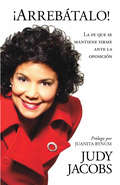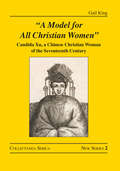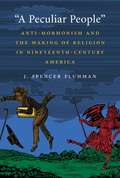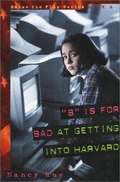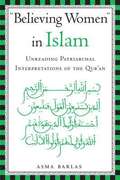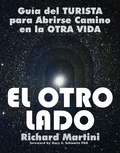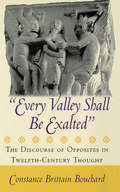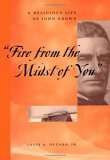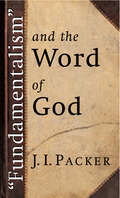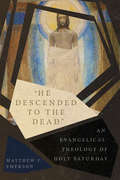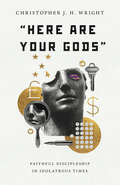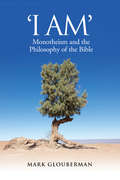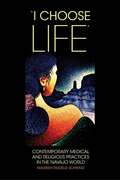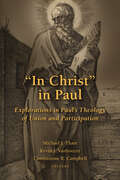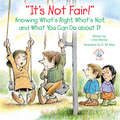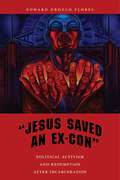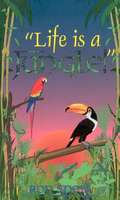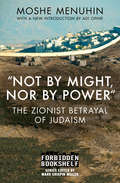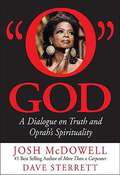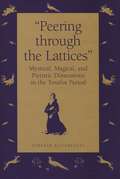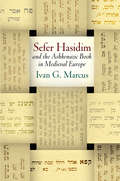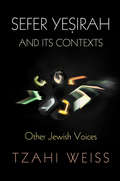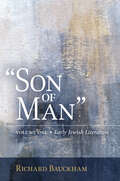- Table View
- List View
!Arrebátalo!: La fe que se mantiene firme ante la oposición
by Judy Jacobs¡Aprende a caminar en el poder de la fe violenta! Párate firme y defiéndete con el arma más poderosa: la fe. Judy Jacobs comparte un mensaje que te llevará a un lugar de "fe violenta" en El, un lugar que está más allá de lo imaginario y fuera de los límites de la religión y tradición. Descubre cómo obtener una fe igual a la de Moisés, Jacob, Josué y Caleb, personajes que simplemente no desistían de lo que Dios tenía para ellos ni se conformaban con menos. Los principios bíbicos de estel ibro revelan: - Por qué las "soluciones a la ligera" no corresponden adecuadamente a las situaciones difíciles - El significado de "pelear la buena batalla de la fe" - Cómo investirse de poder al entender claramente el versículo de Mateo 11:12 - La autoridad que tú tienes en cristo para arrebatar y recuperar lo que por derecho te pertenece Dios quiere hacer lo inconcebible, lo innegable y lo increible a través de ti. ¿Te atreves a creerle a El con una fe violenta?
"1888" For Almost Dummies
by Robert J. Wieland"1888" marks the "beginning" of the world's second Pentecost, and people everywhere are at last beginning to ferret out the story. There is a skeleton in our closet.
"A Model for All Christian Women": Candida Xu, a Chinese Christian Woman of the Seventeenth Century (Collectanea Serica. New Series #2)
by Gail KingThis biography of Candida Xu (1607–1680), granddaughter of the prominent Chinese Christian convert and statesman Xu Guangqi (1562–1633) and foremost Chinese Christian woman of the seventeenth century, is based on the biography of Candida Xu titled Histoire d’une dame chrétienne de la Chine (Paris, 1688) written by her confessor Philippe Couplet, S.J. (1623–1693), an obituary of his mother and other writings by her eldest son, and the Xu family history. Using these as well as other relevant European missionary and Chinese language sources, Candida Xu’s life as daughter, wife, mother, and generous contributor to the Christian Church is recounted. Events in her life are set in the context of historical and religious circumstances in China at the time. Consideration of the situation of women, particularly Christian women, draws out how Candida Xu’s faith helped her and other believing Christian women to gain greater freedom of choice and action.
"A Peculiar People"
by J. Spencer FluhmanThough the U.S. Constitution guarantees the free exercise of religion, it does not specify what counts as a religion. From its founding in the 1830s, Mormonism, a homegrown American faith, drew thousands of converts but far more critics. In "A Peculiar People", J. Spencer Fluhman offers a comprehensive history of anti-Mormon thought and the associated passionate debates about religious authenticity in nineteenth-century America. He argues that understanding anti-Mormonism provides critical insight into the American psyche because Mormonism became a potent symbol around which ideas about religion and the state took shape. Fluhman documents how Mormonism was defamed, with attacks often aimed at polygamy, and shows how the new faith supplied a social enemy for a public agitated by the popular press and wracked with social and economic instability. Taking the story to the turn of the century, Fluhman demonstrates how Mormonism's own transformations, the result of both choice and outside force, sapped the strength of the worst anti-Mormon vitriol, triggering the acceptance of Utah into the Union in 1896 and also paving the way for the dramatic, yet still grudging, acceptance of Mormonism as an American religion.
"B" Is for Bad at Getting into Harvard (Raise the Flag #2)
by Nancy RueA diverse group of high school girls faces the challenges of standing up for what they believe is right. You'll cheer them on and learn more about yourself in each book of the Raise the Flag series! One of the two editors-in-chief of the King High newspaper, Norie runs with the "high achiever" crowd: kids who participate in things like the Academic Olympics...and cheating rings. As a Christian who has recently rededicated her life to God, Norie doesn't want to be a part of it. But stress builds as her friends pressure her to help them. Even worse, Norie's dad wants her to study more instead of spending time with her prayer partners, the Flagpole Girls. He desperately wants her to get into Harvard. But with the change in the grade curve, that'll never happen unless Norie starts cheating, too. Now if she's going to resist the temptation--and avoid being framed by the very kids she's trying to stop--she's going to need prayer, and her Christian friends, more than ever before.
"Believing Women" in Islam
by Asma BarlasDoes Islam call for the oppression of women? Non-Muslims point to the subjugation of women that occurs in many Muslim countries, especially those that claim to be "Islamic," while many Muslims read the Qur'an in ways that seem to justify sexual oppression, inequality, and patriarchy. Taking a wholly different view, Asma Barlas develops a believer's reading of the Qur'an that demonstrates the radically egalitarian and anti-patriarchal nature of its teachings. Beginning with a historical analysis of religious authority and knowledge, Barlas shows how Muslims came to read inequality and patriarchy into the Qur'an to justify existing religious and social structures and demonstrates that the patriarchal meanings ascribed to the Qur'an are a function of who has read it, how, and in what contexts. She goes on to reread the Qur'an's position on a variety of issues in order to argue that its teachings do not support patriarchy. To the contrary, Barlas convincingly asserts that the Qur'an affirms the complete equality of the sexes, thereby offering an opportunity to theorise radical sexual equality from within the framework of its teachings.
"El Otro Lado" Guía del Turista para Abrirse Camino en la Otra Vida
by Lilian G. Selvaggio Richard Martini¿Qué sucede después de que morimos? El autor y premiado cineasta Richard Martini explora inquietantes nuevas evidencias acerca de la vida después de la muerte, mediante la "vida entre vidas", donde se informa que regresamos a encontrar a nuestros seres queridos, almas gemelas y maestros espirituales. Basado en la evidencia de miles de personas que afirman que bajo hipnosis profunda, ellos vieron y experimentaron las mismas cosas básicas acerca de la Otra Vida, el libro entrevista a hipnoterapeutas de todo el mundo, entrenados con el método del cual fue pionero el Dr. Michael Newton, además de examinar sesiones reales de vida entre vidas. El autor accede a realizar él mismo ese viaje, con resultados sorprendentes y cándidos, aprendiendo que estamos completamente conscientes entre nuestras diversas encarnaciones y regresamos para conectarnos con seres queridos y almas gemelas espirituales, y juntos elegimos cómo y cuándo y con quiénes nos reencarnaremos. El autor examina cómo la ley "Kármica" es superada por "El libre albedrío", con almas que eligen vidas difíciles para aprender de su espiritualidad; sin importar qué tan difícil, extraña o compleja pueda parecer una elección de vida, fue realizada de antemano, conscientemente, con la ayuda de seres queridos, almas gemelas y ancianos sabios. Extensivamente investigado, muy sorprendente en su alcance, "El Otro Lado" lleva al lector a un nuevo territorio, valientemente incursionando donde ningún autor lo ha hecho antes, para enlazar las diversas disciplinas de la regresión a vidas pasadas, experiencias cercanas a la muerte, y exploración entre vidas. En las palabras del autor Gary Schwartz, Phd, "una vez que hayas leído este libro, ya nunca más verás el mundo de la misma manera." Elogios para "El Otro Lado": "Richard ha escrito un libro fantástico. Perceptivo, divertido, provocativo y profundo; ¡lo recomiendo absolutamente!" Robert Thurman ("Why the Dalai Lama Mat
"Every Valley Shall Be Exalted": The Discourse of Opposites in Twelfth-Century Thought
by Constance Brittain BouchardIn high medieval France, men and women saw the world around them as the product of tensions between opposites. Imbued with a Christian culture in which a penniless preacher was also the King of Kings and the last were expected to be first, twelfth-century thinkers brought order to their lives through the creation of opposing categories. In a highly original work, Constance Brittain Bouchard examines this poorly understood component of twelfth-century thought, one responsible, in her view, for the fundamental strangeness of that culture to modern thinking.Scholars have long recognized that dialectical reasoning was the basic approach to philosophical, legal, and theological matters in the high Middle Ages. Bouchard argues that this way of thinking and categorizing—which she terms a "discourse of opposites"—permeated all aspects of medieval thought. She rejects suggestions that it was the result of imprecision, and provides evidence that people of that era sought not to reconcile opposing categories but rather to maintain them.Bouchard scrutinizes the medieval use of opposites in five broad areas: scholasticism, romance, legal disputes, conversion, and the construction of gender. Drawing on research in a series of previously unedited charters and the earliest glossa manuscripts, she demonstrates that this method of constructing reality was a constitutive element of the thought of the period.
"Fire From the Midst of You": A Religious Life of John Brown
by Louis A. Decaro Jr.Reveals a complex new portrait of John Brown, radical abolitionist and leader of the 1859 raid on Harper's FerryJohn Brown is usually remembered as a terrorist whose unbridled hatred of slavery drove him to the ill-fated raid on Harper's Ferry, Virginia, in 1859. Tried and executed for seizing the arsenal and attempting to spur a liberation movement among the slaves, Brown was the ultimate cause celebre for a country on the brink of civil war.“Fire from the Midst of You” situates Brown within the religious and social context of a nation steeped in racism, showing his roots in Puritan abolitionism. DeCaro explores Brown's unusual family heritage as well as his business and personal losses, retracing his path to the Southern gallows. In contrast to the popular image of Brown as a violent fanatic, DeCaro contextualizes Brown's actions, emphasizing the intensely religious nature of the antebellum US in which he lived. He articulates the nature of Brown's radical faith and shows that, when viewed in the context of his times, he was not the religious fanatic that many have understood him to be. DeCaro calls Brown a “Protestant saint”—an imperfect believer seeking to realize his own perceived calling in divine providence.In line with the post-millennial theology of his day, Brown understood God as working through mankind and the church to renew and revive sinful humanity. He read the Bible not only as God's word, but as God's word to John Brown. DeCaro traces Brown's life and development to show how by forging faith as a radical weapon, Brown forced the entire nation to a point of crisis. “Fire from the Midst of You” defies the standard narrative with a new reading of John Brown. Here is the man that the preeminent Black scholar W.E.B. Du Bois called a "mighty warning" and the one Malcolm X called “a real white liberal.”
"Fundamentalism" and the Word of God
by J. I. PackerThis modern classic by the author of Knowing God provides a comprehensive statement of the doctrine of Scripture from an evangelical perspective. J. I. Packer explores the meaning of the word "fundamentalism" and offers a clear and well-reasoned argument for the authority of the Bible and its proper role in the Christian life.
"He Descended to the Dead": An Evangelical Theology of Holy Saturday
by Matthew Y. EmersonThe Gospel Coalition"I believe he descended to the dead."
"Here Am I - Send Aaron"
by Jill BriscoeThis book is designed to be used either for personal Bible study or for group Bible study.
"Here Are Your Gods": Faithful Discipleship in Idolatrous Times
by Christopher J. WrightWhen the Israelites exclaimed, "Here are your gods!" at the sight of the golden calf, they were attempting to hold on to the God of their history while fashioning idols for their own purposes. In today's Western world, plenty of shiny false gods still hold power—idols of prosperity, nationalism, and self-interest. Christians desperately need to name and expose these idols. We must retrieve the biblical emphasis on idolatry and apply it anew in our journey of following Jesus. In "Here Are Your Gods," Old Testament scholar Christopher J. H. Wright combines a biblical study of idolatry with practical discipleship. He calls readers to consider connections between Old Testament patterns and today's culture, especially recurring temptations to trust in political power. Now as much as ever, we need a biblically informed understanding of the many ways humans make gods for themselves, the danger of idols, and how God calls us to join him in the battle against idolatry as part of his ongoing mission to be known and worshiped by all peoples.
"I AM": Monotheism and the Philosophy of the Bible
by Mark GloubermanFor whom was the Hebrew Bible written? How much truth does it contain? What, according to the Bible, is the place of men and women in the world? What connection is there between the Bible and morality? In "I AM" Mark Glouberman supplies new answers to these old questions. He does this by establishing that the foundational scripture of the West is, first and foremost, a philosophical document, not a theological tract, nor yet the religious history of a nation. The author identifies the Bible’s fundamental principle, the ontological principle of particularity. This principle, he shows, is what makes the Bible the revolutionary text that it is. God’s "I AM WHO I AM" asserts the principle, of which the Bible’s deity is a personified form. God’s self-identification also points to the real, anthropological, meaning of the ism called "monotheism." A portion of Glouberman’s book is devoted to illustrating the Bible’s live relevance in many of the areas where modern philosophers congregate, including moral philosophy, political philosophy, metaphysics, and epistemology. Isn’t it a bit late in the day for the Bible’s meaning to be revealed? Glouberman says that it’s about time.
"I Choose Life": Contemporary Medical and Religious Practices in the Navajo World (Volume 2) (New Directions in Native American Studies)
by Maureen Trudelle SchwarzHow Navajos navigate the complex world of medicine Surgery, blood transfusions, CPR, and organ transplantation are common biomedical procedures for treating trauma and disease. But for Navajo Indians, these treatments can conflict with their traditional understanding of health and well-being. This book investigates how Navajos navigate their medically and religiously pluralistic world while coping with illness. Focusing on Navajo attitudes toward invasive procedures, Maureen Trudelle Schwarz reveals the ideological conflicts experienced by Navajo patients and the reasons behind the choices they make to promote their own health and healing. Schwarz has conducted extensive interviews with patients, traditional herbalists and ceremonial practitioners, and members of Native American Church and Christian denominations to reveal the variety of perspectives toward biomedicine that prevail on the reservation and to show how each group within the tribe copes with health-related issues. She describes how Navajos interpret numerous health issues in terms of local understanding, drawing on both their own and biomedical or Christian traditions. She also provides insight into how Navajos use ceremonial practice and prayer to deal with the consequences of amputation or transplantation.
"In Christ" in Paul: Explorations in Paul's Theology of Union and Participation
by Kevin J. Vanhoozer Constantine R. Campbell Michael J. ThateNineteen biblical scholars and theologians in this volume explore the notions of union and participation within Pauline theology, teasing out the complex web of meaning conveyed through Paul's theological vision of being "in Christ." With essays that investigate Pauline theology and exegesis, ex-amine highlights from reception history, and offer deep theological reflection, this exemplary multidisciplinary collection charts new ground in the scholarly understanding of Paul's thought and its theological implications.
"It's Not Fair!"
by R. W. Alley Linus MundyWhen it comes to fairness, every kid knows that a parent can't break a candy bar perfectly in half, for sharing. We grown-ups also know what it's like not being treated fairly, and we know that much unfairness springs from such things as greed, or hatred, or anger, or prejudice, or misunderstanding, or even from the ways of Nature. But using these "big words" to explain unfairness to children will probably not work. And so, in this book, author Linus Mundy, offers words and examples that children will understand and relate to. Our children are ready to understand more about this big, wide world we live in. And they are ready to make it better for everyone, by making it more just, more fair.
"Jesus Saved an Ex-Con": Political Activism and Redemption after Incarceration (Religion and Social Transformation #9)
by Edward Orozco FloresAn examination of the efforts of faith-based organizations to expand the rights of the formerly incarcerated The use of religion to rehabilitate and redeem formerly incarcerated individuals has been a cultural touchstone of the modern era. Yet religious outreach to those with criminal records has typically been associated with an emphasis on private spirituality, with efforts focused on repentance, conversion, and restorative justice. This book sheds light on how faith-based organizations utilize the public arena, mobilizing to expand the social and political rights of former inmates. In “Jesus Saved an Ex-Con,” Edward Orozco Flores profiles Community Renewal Society and LA Voice, two faith-based organizations which have actively waged community organizing campaigns to expand the rights of people with records. He illuminates how these groups help the formerly incarcerated re-enter broader communities through the expansion of citizenship rights and participation in civic engagement. Most work on prisoner reentry has focused on how the behavior of those with records may be changed through interventions, rather than considering how those with records may change the society that receives them. Flores explores how the formerly incarcerated use redemption scripts to participate in civic engagement, to remove the felony conviction question from employment applications and to restrict the use of criminal background checks in housing and employment. He shows that people with records can redeem themselves while also challenging and changing the way society receives them.
"Life Is a Jungle" (Book 2: The Rani Adventures)
by Ron SnellIn this delightfully written book, Ron continues his memoir. His parents are Wycliffe translators, who live much as the Machiguenga do. Ron spends much of his time with his Peruvian Indian friends, helping with projects, which often leads to fascinating and hilarious adventures. Ron loves this life, and he writes with a warmth and cleverness that makes this book hard to put down. The other books in this series are available from Bookshare.
"Not by Might, Nor by Power": The Zionist Betrayal of Judaism (Forbidden Bookshelf #22)
by Moshe MenuhinWith a new introduction by Adi Ophir: An early and fierce critique of Zionism from a Jewish child of Palestine who argued against nationalism and injustice. Born in 1893, Moshe Menuhin was part of the inaugural class to attend the first Zionist high school in Palestine, the Herzliya gymnasium in Tel Aviv. He had grown up in a Hasidic home, but eventually rejected orthodoxy while remaining dedicated to Judaism. As a witness to the evolution of Israel, Menuhin grew disaffected with what he saw as a betrayal of the Jews&’ spiritual principles. This memoir, written in 1965, is considered the first revisionist history of Zionism. A groundbreaking document, it discusses the treatment of the Palestinians, the effects of the Holocaust, the exploitation of the Mizrahi Jewish immigrants, and the use of propaganda to win over public opinion in America and among American Jews. In a postscript added after the Six-Day War, Menuhin also addresses the question of occupation. This new edition is updated with an introduction by Israeli philosopher Adi Ophir, putting Menuhin&’s work into a contemporary historical context. Passionate and sometimes inflammatory in its prose, and met with controversy and anger upon its original publication under the title The Decadence of Judaism in Our Time, Menuhin&’s polemic remains both a thought-provoking reassessment of Zionist history and a fascinating look at one observer&’s experience of this embattled corner of the world over the course of several tumultuous decades.
"O" God: A Dialogue On Truth And Oprah's Spirituality
by Josh Mcdowell Dave Sterrett"O" God: A Dialogue on Truth and Oprah's Spirituality provides an in-depth look at one of the greatest media influences of all time: the empire of Oprah. Between The Oprah Winfrey Show and O Magazine, millions of people are exposed to Oprah's spiritual beliefs. Christians and those of other faiths are asking tough questions and looking for answers. McDowell and Sterrett approach the spirituality of Oprah by means of a fictional narrative featuring conversation between two friends. The spiritual conversation begins when the two girls get together to discuss spiritual issues. By using stories to address the deeper issues raised in the spiritual discussions held by Oprah and her friends, McDowell and Sterrett disarm and entertain their readers while also revealing biblical truths and exposing the errant teachings and misconceptions of Oprah. Meredith Andrews explains that: "In a day and time when some people feel that truth becomes obscure and moral lines are blurry, 'O' God addresses the popular concept of tolerance, along with other controversial ideas embraced and taught by Oprah herself, in a way that is easily accessible, scripturally based, and lovingly communicated. McDowell and Sterrett do a phenomenal job of comparing and contrasting Oprah's spiritual undertakings with God's Word and helping readers to thoroughly examine the spiritual trends of the day. Completely eye-opening and a must-read." McDowell, a mega-bestselling Christian author and evangelist, teams up with Sterrett, a gifted writer and popular speaker, to broach a serious subject with a wise, balanced, easy-to-read approach. McDowell and Sterrett help readers to discern the truth about the spirituality of Oprah and her friends.
"Peering Through the Lattices": Mystical, Magical, and Pietistic Dimensions in the Tosafist Period
by Ephraim KanarfogelDuring the high Middle Ages, the tosafists flourished in northern Europe and revolutionized the study of the Talmud. These Jewish scholars did not participate in the philosophical and religious thought that concerned Christendom, and today they are seen as having played a limited role in mystical or esoteric studies. Ephraim Kanarfogel now challenges this conventional view of the tosafists, showing that many individuals were influenced by ascetic and pietistic practices and were involved with mystical and magical doctrines. He traces the presence of these disciplines in the pre-Crusade period, shows how they are intertwined, and suggests that the widely available Hekhalot literature was an important conduit for this material. He also demonstrates that the asceticism and esotericism of the German Pietists were an integral part of Ashkenazic rabbinic culture after the failure of Rashbam and other early tosafists to suppress these aspects of pre-Crusade thinking. The identification of these various forms of spirituality places the tosafists among those medieval rabbinic thinkers who sought to supplement their Talmudism with other areas of knowledge such as philosophy and kabbalah, demonstrating the compatibility of rabbinic culture and mysticism. These interests, argues Kanarfogel, explain both references to medieval Ashkenazic rabbinic figures in kabbalistic literature and the acceptance of certain ascetic and mystical practices by later Ashkenazic scholars. Drawing on original manuscript research, Kanarfogel makes available for the first time many passages produced by lesser known tosafists and rabbinic figures and integrates the findings of earlier and contemporary scholarship, much of it published only in Hebrew. "Peering through the Lattices" provides a greater appreciation for these texts and opens up new opportunities for scholarhship in Jewish history and thought.
"Sefer Hasidim" and the Ashkenazic Book in Medieval Europe (Jewish Culture and Contexts)
by Ivan G. MarcusComposed in Germany in the early thirteenth century by Judah ben Samuel he-hasid, Sefer Hasidim, or "Book of the Pietists," is a compendium of religious instruction that portrays the everyday life of Jews as they lived together with and apart from Christians in towns such as Speyer, Worms, Mainz, and Regensburg. A charismatic religious teacher who recorded hundreds of original stories that mirrored situations in medieval social living, Judah's messages advocated praying slowly and avoiding honor, pleasure, wealth, and the lures of unmarried sex. Although he failed to enact his utopian vision of a pietist Jewish society, his collected writings would help shape the religious culture of Ashkenazic Judaism for centuries.In "Sefer Hasidim" and the Ashkenazic Book in Medieval Europe, Ivan G. Marcus proposes a new paradigm for understanding how this particular book was composed. The work, he contends, was an open text written by a single author in hundreds of disjunctive, yet self-contained, segments, which were then combined into multiple alternative versions, each equally authoritative. While Sefer Hasidim offers the clearest example of this model of composition, Marcus argues that it was not unique: the production of Ashkenazic books in small and easily rearranged paragraphs is a literary and cultural phenomenon quite distinct from anything practiced by the Christian authors of northern Europe or the Sephardic Jews of the south. According to Marcus, Judah, in authoring Sefer Hasidim in this manner, not only resisted Greco-Roman influences on Ashkenazic literary form but also extended an earlier Byzantine rabbinic tradition of authorship into medieval European Jewish culture.
"Sefer Yesirah" and Its Contexts: Other Jewish Voices (Divinations: Rereading Late Ancient Religion)
by Tzahi WeissSefer Yeṣirah, or "Book of Formation," is one of the most influential Jewish compositions of late antiquity. First attested to in the tenth century C.E. and attributed by some to the patriarch Abraham himself, Sefer Yeṣirah claims that the world was created by the powers of the decimal number system and the twenty-two letters of the Hebrew alphabet. This short, enigmatic treatise was considered canonical by Jewish philosophers and Kabbalists and has fascinated Western thinkers and writers as diverse as Leibnitz and Borges. Nonetheless, Sefer Yesirah is nearly impossible to contextualize, mainly owing to its unique style and the fact that it does not refer to, nor is it referenced by, any other source in late antiquity. After a century and a half of modern scholarship, the most fundamental questions regarding its origins remain contested: Who wrote Sefer Yeṣirah? Where and when was it written? What was its "original" version? What is the meaning of this treatise?In "Sefer Yeṣirah" and Its Contexts, Tzahi Weiss explores anew the history of this enigmatic work. Through careful scrutiny of the text's evolution, he traces its origins to the seventh century C.E., to Jews who lived far from rabbinic circles and were familiar with the teachings of Syriac Christianity. In addition, he examines the reception of Sefer Yeṣirah by anonymous commentators and laypeople who, as early as the twelfth century C.E., regarded Sefer Yeṣirah as a mystical, mythical, or magical treatise, thus significantly differing from the common rabbinic view in that period of the text as a philosophical and scientific work. Examined against the backdrop of this newly sketched historical context, Sefer Yeṣirah provides a unique and surprising aperture to little-known Jewish intellectual traditions of late antiquity and the early Middle Ages which, despite their distance from the rabbinic canon, played a vital role in the development of medieval Jewish learning and culture.
"Son of Man": Early Jewish Literature
by Richard BaukhamWho is the &“Son of Man&”? In pre-Christian Jewish writings, &“Son of Man&” was not a title, and it certainly did not indicate divinity. It was simply an expression for a man. Yet the term has held considerable interest among scholars of Christology for its use in describing Jesus in the gospels. And among those studying messianism in Second Temple Judaism, consensus about the valences of &“Son of Man&” in Scripture remains elusive. In the first volume of this landmark study, Richard Bauckham pushes the conversation forward, explicating the phrase &“Son of Man&” as it appears in Jewish interpretations of the book of Daniel and in the apocryphal book of 1 Enoch. With philological precision and sensitivity to his sources, Bauckham attunes us to the realities of early Jewish eschatology. Thorough and comprehensive, &“Son of Man,&” vol. 1, offers scholars a solid basis for understanding the context of the messiah in the centuries leading up to Jesus. Along with the forthcoming second volume, which parses the meaning of &“Son of Man&” in the Gospels, Bauckham&’s work is essential for understanding one of the most widely used yet misunderstood phrases in the Bible.
